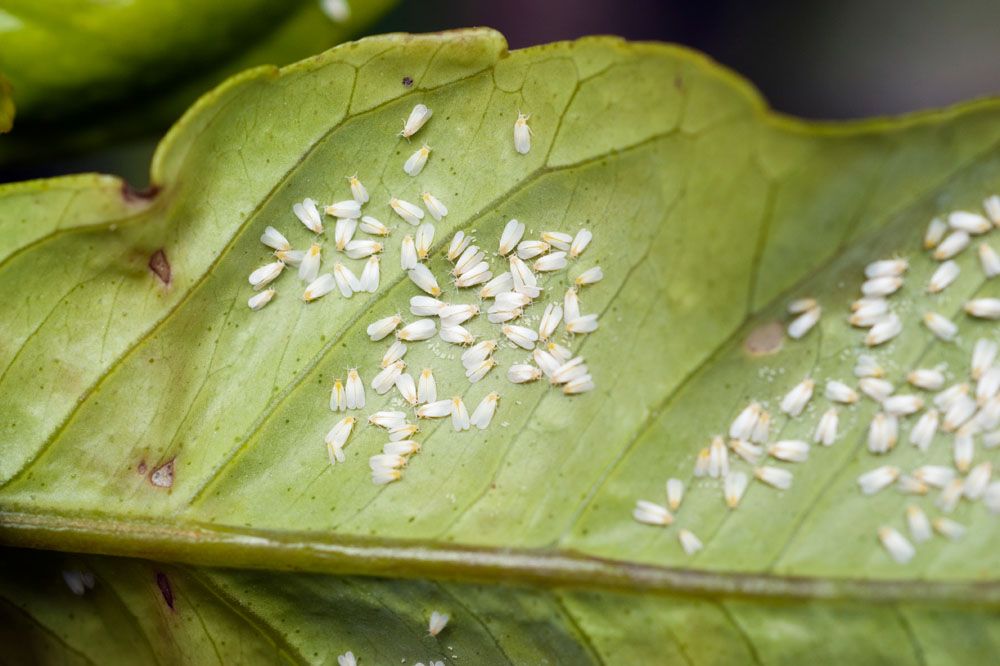
Greenhouse Whitefly – Trialeurodes vaporariorum
Greenhouse Whitefly: Appearance, Territory, Damage and Life
Latin name: Trialeurodes vaporariorum
Appearances: Eggs (0.23 x 0.1 mm) are translucent to pale cream-yellow when originally laid, changing to brown-black over time. “Crawlers” are the first nymphal instars (0.23 × 0.11 mm), which are nearly transparent, flat, and oval. The translucent, oblong, and have wavy margins second nymphal instars (0.38 x 0.23 mm). Despite being larger (0.54 × 0.33 mm), third nymphal instars are morphologically similar to second nymphal instars. Adult wings that have just emerged (0.75 x 1.10 mm) start as clear but eventually develop a white waxy coating. Male and female are different sizes.
Host plants: Greenhouse whiteflies can survive outside during the growing season, especially in protected areas, and they infest a wide range of ornamental and vegetable crops. Trees may also be infected (redbud, Kentucky coffee berry, and avocado).
Territory: Pests of ornamentals and vegetables grown in greenhouses all over the world include greenhouse whiteflies. They were detected in the northeastern United States in 1870 after being first discovered in England in 1856. The greenhouse whitefly may have originated in tropical South or Central America.
Damage insect caused: Whitefly larvae devour a lot of plant sap because they require a lot of protein to thrive. This has a high sugar content, and larger larvae excrete enormous amounts of honeydew as a result of the extra sugar. Whiteflies damage crops by sucking out the plant sap and releasing honeydew from the leaves of the host plant. The following effects may result from this: Feeding on plant sap may have an impact on the physiology of the plant and slow growth if the population is very great. Leaves may wilt and fall off in direct sunlight. It is possible to spread viruses.
Life cycle and history: With the aid of a peduncle, greenhouse whiteflies lay eggs that are fastened to the leaf. The eggs are dispersed across the surface of hairy leaves. The first nymphal instar can move across the leaf surface because to its small legs. Once it has successfully probed a leaf for sap after hatching, it may only go a short distance before settling to feed. It stays here until it has fully grown into an adult. The body enlarges and becomes more rounded before molting into the following nymphal instar. Within a few hours, adults are able to fly, and they start feeding by piercing leaves and sucking plant sap, which they do for the remainder of their lives.
